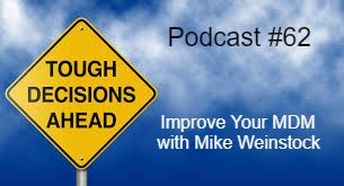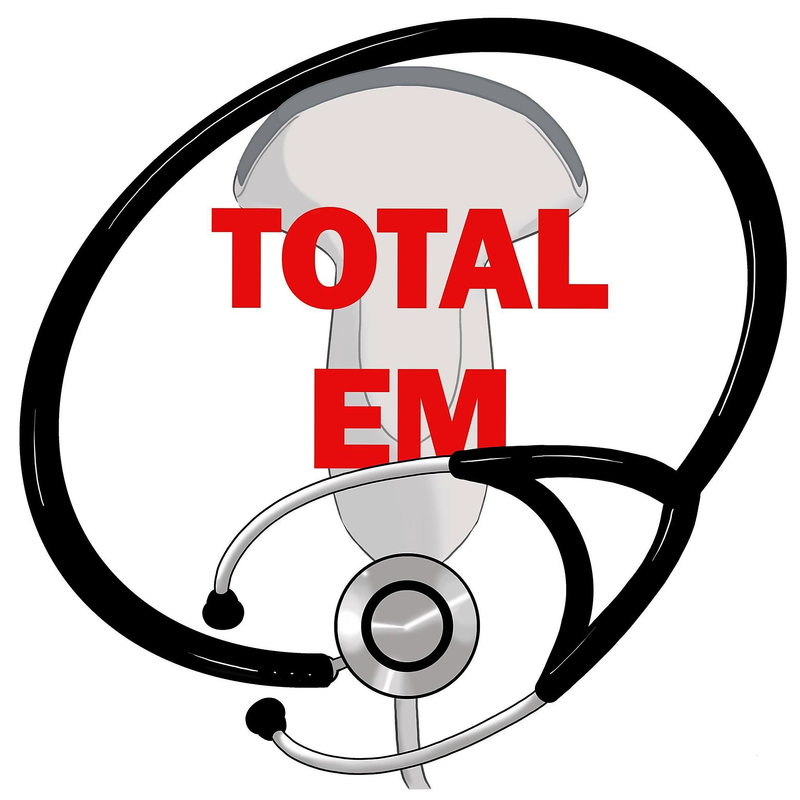|
Some of us do it well, some of us do not do it at all, but we all could use improvement. The medical decision making (MDM) portion of the chart is one area we all can work on. It is quite possibly the single most important portion of the chart for multiple reasons including acting as a "hard stop" in decision making, explaining course of care and management, reviewing highlights of the visit, and even potentially helping in a legal situation. Today, we have Mike Weinstock joining us on this very important podcast.
Mike Weinstock is the author of Bouncebacks series. He comes right out on the podcast with tips from the beginning. Definitely have to listen for all of the pearls, but here are a few:
The hard stop is a very important portion of the MDM. Use this in real time with patients to help explain your thought process. This can change with time based on new findings or results. Make sure to time stamp these sections. Potentially, this can help remind you in real time if you considered all the life threats and necessary steps to make sure the patient is taken care of appropriately. Mike describes that this should also act as a "closing argument" in the sense of explaining how your arrived at the final diagnosis along with why the disposition and treatment was chosen. Repeat exams or later findings from the original H&P should be specified in the progress part of the note (this is where we place the MDM, as well). We made a quick joke with GomerBlog about triage levels. However, it is important to address the primary concern that brought the patient to your service. This includes addressing the chief complaint from the nursing note. Sometimes they are not the same thing or there was a miscommunication, but it still must be addressed. A hot topic is "shared decision making" but we are not all doing it correctly. Shared decision making needs to be a choice between at least two reasonable alternative pathways. Mike completed a study regarding chest pain with using clinically relevant adverse events that ties right into this subject. It is important to make sure patients understand that decisions are not without potential risks and to make sure they accept such risks when sharing this decision. Let us know what you think by giving us feedback here in the comments section or contacting us on Twitter or Facebook. Remember to look us up on Libsyn and on iTunes. If you have any questions you can also comment below, email at [email protected], or send a message from the page. Please check our bandwidth sponsor, FunnyRx, too. We hope to talk to everyone again soon. Until then, continue to provide total care everywhere.
4 Comments
Chip Lange, PA-C
10/11/2017 06:03:23 pm
Thank you, Gabe. Glad you enjoyed it. There will be similar topics soon that expand on documentation issues.
Reply
Gabe Westheimer
10/11/2017 06:36:16 pm
I use Pulse Check - it's clunky but thats what we have here at SFGH.
Chip Lange, PA-C
10/12/2017 05:14:02 am
Thanks for the input and great points. I am a fan of dictation but still use it cautiously since my program at least is prone to errors or not fully understanding speech even with very clear vocabulary and speech. Sometimes it takes longer than typing if you are fast with your typing skills, but overall I'm still a fan for dictation. Leave a Reply. |
Libsyn and iTunesWe are now on Libsyn and iTunes for your listening pleasure! Archives
August 2022
Categories |
||||||


 RSS Feed
RSS Feed